Herberton, Queensland, which is
often called "the village in the hills", is located on the Atherton Tablelands, 60 km south-west of Cairns, beside the Wild River.
Herberton was an incredibly rich tin mining field, which had about 20 pubs in its heyday, two local newspapers and a brewery. Tin mining was finished in the town by 1978.
The Dyirbal Aboriginal People
The Dyirbal Aboriginal people, traditionally lived in the upper Murray river of the Atherton Tableland,
camping in cleared areas of the tropical rainforest. According to tradition, Dyirbal people lived in groups of about six to eight families. Each group had their own camp, usually at the fringe of the rainforest
In 1913, Dr Eric Mjöberg, a Swedish entomologist spent seven months in the tropical rainforest region of Far North Queensland, mainly exploring areas around the Atherton Tablelands and examining the social and cultural disruption experienced by Aboriginal rainforest groups. He wrote:
"From Herberton, located in open forest country, a white gentleman, three natives and myself, travelled with a small horse caravan to Cedar Creek, located at the edge of the dark rainforest region. How far these forests stretch is still unknown, these territories are yet to be explored. A few settlers have set camp in order to clear some land and cultivate it. We set up camp at the fringe of the rainforest. One hundred metres away was the location of a large native camp. I was very interested in the indigenous race and discovered many new and interesting things about the natives in the camps close to Cedar Creek that I had not come across earlier in my travels." (Mjöberg, 1918)
Mjöberg believed that Aboriginal people should be allowed, as far as possible,
to live according to their own beliefs and lifestyles (Mjöberg, 1918: 359-60); rather than be exposed to the "civilising" process of missionaries.
In general, the rainforest people of North Queensland were noted to have a distinctive material culture, different from other tribes inhabiting drier, more open land.
According to Mjöberg (1918) "Each tribe has a different design on the face of its shields’, the designs being painted partly with human blood extracted by the artist poking sharp objects up his nose".
The Dyirbal People made animal nets and traps from a range of materials. A turkey trap (Bala warrany) was constructed by securing a few lengths of lawyer cane
into the ground and bending the cane over into a semi-circular shape. They also used bark from the banana fig as a type of blanket.
 |
This photograph shows two men and four women and a children from the Herberton District.
Herberton traditional owners are the Jirrbal, also known as Dyirbal people. State Library of Queensland |
 |
"The commonwealth of Australia; federal handbook, prepared in connection with the eighty-fourth meeting of the British association for the advancement of science, held in Australia, August, 1914" (1914). Text Appearing After Image:
Fig. 17,—Objects of Magic—^1, 2, 3, 4. .>. Various Forms of Pointing Bones andSticks. 6, 7, 8. Necklets containing Hair cut from a dead Man. 9. Bret.A Dead Hand, which vibrates to indicate approaching danger—Kurnai Tribe,10. Dead Mans Arm Bone, used on Avenging Expedition. 11. Tikovina, worn During fight by the Natives of the Herbert River, Queensland. Aboriginals of Australia.
|
When Mjöberg arrived in Herberton, he spent considerable time in the vicinity of a large, Aboriginal campsite he referred to as Cedar Creek (Ravenshoe). He wrote :
"Most of the trees in the rainforest were giants, which had developed enormous buttress roots. The intelligent natives, who make use of their environment in every possible way, produce their large, beautifully painted shields from these roots. They also use the roots in a signalling system. By hitting the roots hard, they produce a shivering noise that travels a long distance through the rainforest. (Mjöberg, 1918: 175).
1870s
Discovery of Tin
James Venture Mulligan is the first known European to
have discovered the site of Herberton. He was prospecting for gold in 1875 but instead found "a fine sample of tin ore".
John Atherton, another Queensland pioneer, then led a small party of which John Newell was a member, to the Herberton area in November 1879, but they did not find much ore, so
they returned to Tinaroo.
1880s
The Town GrowsThe first dwellings around Herberton were bark huts and tents; then cedar and tin houses began to be built. Evelyn Station, some 20 kilometres south of Herberton, was established by Frank Stubley in 1880.
After hearing rumours that Chinese miners were moving into the Herberton area, John Newell and other members of the earlier party, William Jack. Thomas Brandon and John Brown soon realised that the black rocks of the Herberton area were evidence of a significant tin find. The next day, 20th April 1880, they made their claim which would become known as the "Great Northern lode".
A Native Mounted Police Camp was established south of Herberton during 1880.
 |
| John Newell (30 November 1849 – 29 July 1932) was a member of the Queensland Legislative Assembly |
 |
| William Jack, early explorer in the Herberton District, Queensland |
The tin ore of the Herberton region, when tested, was assayed at an extremely rich 71%. This led Jack and Newell to establish the Great Northern mine and battery, which operated from 1880 to 1956.
John Moffat decided to expand his tin-buying business, and the Herberton Tin Company was formed, at the head of the Wild River, near Herberton. Battery machinery was erected in 1881 at "The Great Northern" mine.
Herberton's first store was set up in a small bark hut on the corner of Grace and William Streets. This was
the beginning of the famous Jack and Newell's stores. At another store, Selig's Crystal Palace, you could buy almost everything. However, if you wanted a watch or a piece of jewellery, George Airey's shop was the place to go.
Pioneer familiesThe Bimrose and the Arbouin families were early pioneers of Herberton. Mrs Bimrose, who was the "hostess" of the Herberton Hotel, came from Hodgkinson with the teams in 1880. Her son, Herbert, named after the town, was the first boy born in Herberton. His sister, Mrs Smythe, ran the post office for a time. Mrs Smythe also had another claim to fame, as she "christened" the Great Northern Mine with a bottle of champagne when she was a young girl.
Telegraphic line connecting Herberton to Cairns 1882.
Herberton had 18 hotels in 1883. One of the earliest hotels in Herberton was Finnegan's Hotel. This was the hotel where most of the Cobb and Co. passengers stayed, as this is where the coach stopped and where Malachi Breen took care of the horses and where Bill McDonald ran the coach from Herberton to Irvinebank.
The Australia Hotel was kept by Mrs Algar, and the Cosmopolitan Hotel was managed by Jim Reed. Bill Wall, a coach driver, ran a hotel near Jack and Newell's.
 |
| View of a wooden bridge in Herberton, Queensland, 1888. Horseman and pedestrians on the way into Herberton. State Library of QLD |
 |
| Looking across the high paddock to Herberton, Queensland, 1888, State Library of QLD |
 |
| The Cosmopolitan Hotel, Herberton. Cairns & Mears mining brokers have premises next door, Herberton, circa 1888 |
The Arboutin family followed the road from Port Douglas to Granite Creek (Mareeba), through to the Hodgkinson Goldfield and then, to get to Herberton, they had to follow a blazed-tree trail. which means that about every couple of hundred yards, a trail would be created by clearing trees and vegetation, or marking trees.
 |
Herberton, QLD, no date. The Herberton Hotel was
Established in 1880. The Bimrose family held the licence from 1880 to 1927 |
1890s
The butcher shop of Herberton was once run by Dan White. John Boyett, who had previously edited the newspaper,
The Hodgkinson Miner, moved with the newspaper to Herberton and renamed
The Wild River Times; editing it from 1883, until his death in 1904.
Matron Murphy and her husband "Mick", the wardsman, served the Herberton Hospital for a number of years, as did Dr Bowkett.
 |
Premier's reception, Stony Creek Falls Bridge, Queensland, 1890 during construction of the Cairns Herberton railway. The Cairns Range Railway was built to connect the mining centre of Herberton with Cairns. Work began on 10 May 1886, 1886-1891, 1991).
(Fryer Library) |
 |
| Herberton, Queensland 1891 showing H. Selig Crystal Palace Bazaar building, facade of Royal Exchange Hotel and S. Kersh buildings. Man in white shirt is Herman Selig, UQLD |
 |
| Herberton,Queensland 1891 showing E.H. Hosien saddler, Cobb & Co. booking office and Herberton Sale Rooms, Horse Bazaar & Mining Exchange A.J.J. Warby auctioneer, UQLD |
 |
| Bullock team driving down Herberton's main street. Walsh & Co. store and many other businesses are visible, circa 1895 |
 |
| The main street of Herberton around 1895 |
 |
| The Herberton Show, general exhibits in the hall, QLD, North Queensland Register (Townsville, Qld. : 1892 - 1905), Monday 1 May 1899 |
 |
The residence of John Newell, Herberton, QLD, Australian Town and Country Journal (Sydney, NSW : 1870 - 1907), Saturday 28 January 1899
|
 |
| Maund's Hotel Licensed Victuallers and Cobb & Co. Coach, Herberton, QLD, Australian Town and Country Journal (Sydney, NSW : 1870 - 1907), Saturday 28 January 1899 |
 |
| Railway tunnel under the Herberton road, QLD, with the Cosmopolitan Hotel above, n.d. |
 |
| Herberton Hospital, from the book: The goldfields of Queensland. Chillagoe, Herberton and Watsonville mineral fields and the Hodgkinson goldfield / by Wm. Lees, Lees, William. 1899 |
Sometime after 1898, John Moffat bought Evelyn Station, so that he had access to the rich cedar forests. He transported a sawmill to the vicinity in 1899.
1900s |
| Herberton, Qld - early 1900s, Aussie~mobs |
 |
| Herberton State School, QLD, circa 1903 |
 |
| Public school at Herberton, Qld - circa 1904. Written on reverse: The Herberton School. Gower was teaching at the time, Aussie~mobs |
 |
| House of Robert Ringrose, Herberton, QLD. Barrister, geologist, naturalist, fellow of Royal Geographical Society of Queensland, who established the conservation area now known as Mount Hypipamee National Park .North Queensland Register (Townsville, Qld. : 1892 - 1905), Monday 12 June 1905 |
 |
| The coach at the top of the range, QLD, North Queensland Register (Townsville, Qld. : 1892 - 1905), Monday 12 June 1905, |
 |
| Herberton town and mines, QLDThe bulletin. Vol. 30 No. 1545 (23 Sep 1909) |
 |
| Herberton to Atherton coach, QLD |
 |
| Postcard of Great Northern Tin Mine, Herberton, North Queensland, circa 1907 |
 |
An Aboriginal man climbing a large eucalyptus tree, on the Herberton Range in North Queensland
during November, 1908. Small steps, or footholds, are cut into the tree with the tomahawk, and the climber hangs on by means of the supple vine which has been placed around the trunk, and which he moves upwards each time fresh steps are cut. Sydney Morning Herald (NSW : 1842 - 1954) |
The railway connecting Cairns to Herberton via Atherton
was extended around 1910.
 |
| Opening of the Herberton Railway, QLD, circa 1910 |
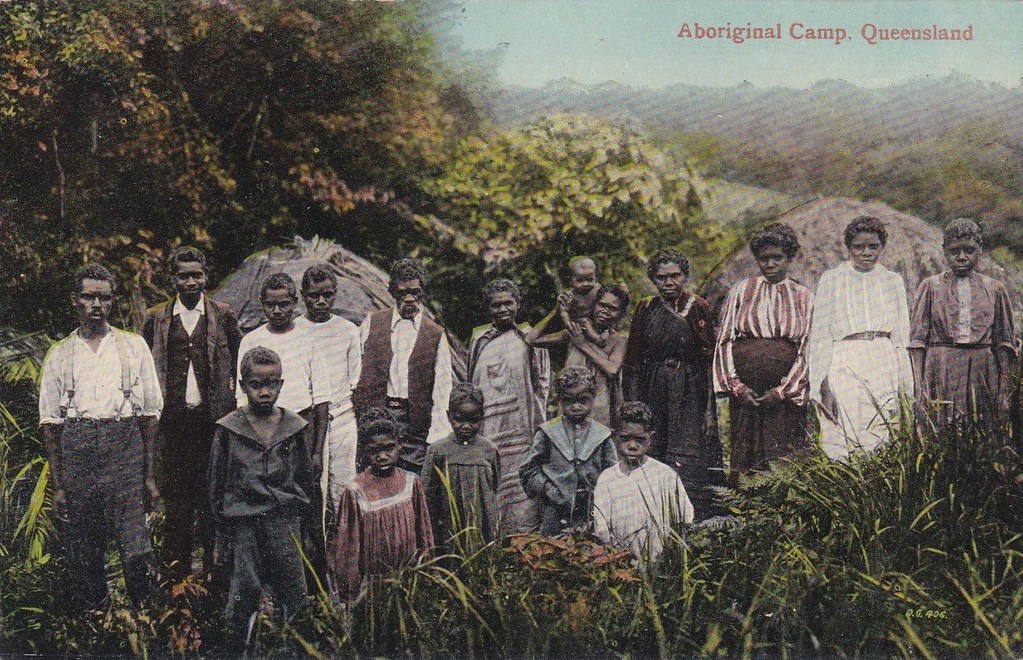 |
| Aboriginal Camp somewhere in Queensland - circa 1910. Aussie Mobs |
 |
| School and residence, Herberton, QLD, 1910. Kaye |
 |
| Blanket distribution at Herberton, QLD, 1911, SLQLD. The most enduring institution in Aboriginal–European relations — the annual distribution of blankets — produced valuable documents for Aboriginal family and social historians. The "Blanket lists" often included an individual’s English name, Native name, probable age, number of wives, children, Tribe, and district of usual resort |
 |
| Great Northern battery near Herberton, Qld, opened 1882, Week (Brisbane, Qld. : 1876 - 1934), Friday 12 May 1911 |
 |
| Herberton Court House built 1882, QLD. Week (Brisbane, Qld. : 1876 - 1934), Friday 13 September 1912, |
 |
| Herberton Hospital opened in 1883, QLD. Week (Brisbane, Qld. : 1876 - 1934), Friday 13 September 1912 |
 |
| Herberton Show and Races, QLD. Northern Herald (Cairns, Qld. : 1913 - 1939), Friday 1 May 1914 |
 |
| A Rich Silver-Lead Field— Orient Camp, Near Herberton, QLD, Australian Town and Country Journal (Sydney, NSW : 1870 - 1919), Wednesday 1 July 1914 |
 |
| Captain Henry Joseph Lacy had a long military career. After he left the army, he became an express rider in North Queensland, and was the first man to convey mails from Cairns to Herberton, QLD. The Week (Brisbane, Qld. : 1876 - 1934) Fri 11 Jun 1915 |
 |
| Grace Street Herberton, QLD, c 1915 |
 |
| Mount Saint Bernard College in Herberton, QLD, SLQLD, 1915? |
WWI  |
| Private H Turner, Service Number: 251. Place of Birth: Herberton, QLD, Australia. Place of Enlistment: Cairns, QLD, Australia. Next of Kin: Turner, John (father) 1917 |
 |
| State School, Herberton, NSW, Week (Brisbane, Qld. : 1876 - 1934), Friday 31 March 1916 |
 |
| 1. Herberton railway Station QLD. 2. View of Herberton. Northern Herald (Cairns, Qld. : 1913 - 1939), Thursday 17 July 1919 |
1920s
 |
| Herberton Rugby League Team, QLD, 1925, State Library of Queensland |
 |
| The Royal Hotel at Herberton, QLD, was established May 1880, about 1920s |
 |
| Herberton showing the "Grey Northern" works and Wild River, QLD. Week (Brisbane, Qld. : 1876 - 1934), Friday 4 December 1925 |
 |
| These snapshots were taken by Mr. Perrott at Herberton, North Queensland, where Caro, an aboriginal, is a well-known identity. He is 50 years of age. In the first picture Caro, with the aid of a length of lawyer vine slipped around the tree, walks up the trunk as readily as if he were walking on flat ground. In the second he puts the vine around his body as well as the tree, and provides himself with a comfortable breathing space. In the third picture he is chopping with a tomahawk to show how free of action he is in the position. In the final snapshot Caro is fixing a wire for an aerial on the tree. Sydney Mail (NSW : 1912 - 1938), Wednesday 24 August 1927 |
1930s
 |
| Shire Council Office, Herberton, QLD, (approx. 1920s-1940s) Queensland State Archives |
 |
| Funeral procession in Herberton Queensland ca 1930, State Library of Queensland |
 |
Sydney Mail (NSW : 1912 - 1938), Wednesday 8 August 1934
|
1940s and WWII
A remarkable full-blooded aborigine
woman, Dinah McBride, died in
Herberton (Q.) Hospital the other day.
Her story goes back to a day in 1885
when, after a native battle some miles
from Herberton. a party of white men
found her, a tiny babe, lying unhurt
In some bushes— either her parents
had been killed or she had been de
serted. The men took the dusky child
to Mrs. McBride. one of the local
pioneers. Who brought up the found
ling as if she were her own child.
She had the babe christened Dinah
McBride, educated her, and, in turn
Dinah as she grew up tended Mrs.
McBride's stock, and looked after her
ageing benefactor. When the old
lady died. Dinah went to the local
Convent and worked there with the
Sisters till her Call came. Greatly
respected by everyone, her funeral was
an extr/emely large one, with many
beautiful floral tributes, while some
relatives of the McBride family tra
velled from Atherton to witness the
last rites.Wingham Chronicle and Manning River Observer (NSW : 1898 - 1954), Tuesday 13 July 1948
 |
| Cyclone damage to the local Methodist Church in Herberton. John Oxley Library, State Library of Queensland |
 |
| Anzac Day in Herberton, QLD, year unknown. AWM |
 |
| Army in Herberton, QLD, 1939-1945, State Library of QLD |
 |
| Herberton Anzac Day, QLD, 1944-04-25, AWM |
 |
| Herberton Anzac Day 1944. The 6th Division led by the band of the 2/2 Infantry Battalion marching along the main street to the War Memorial for the Anzac Day Service. AWM |
1950s  |
| Saint Mary's Church of England Girls School destroyed by fire, Herberton, QLD, Townsville Daily Bulletin (Qld. : 1907 - 1954), Thursday 6 March 1952 |
1970s
Harry Skennar collected pioneer buildings and relics from Herberton, for about 20 years, without any financial assistance. The open-air historic museum in Herberton opened in 1977.
Australia's First Female Jockey
Herberton these days has only a small population but receives about 40,000 visitors each year.
Some people come to visit the Herberton Cemetery. One headstone reads, "In loving memory of Wilhemena "Bill" Smith, Australia's first licensed female jockey". Ms Smith,
who was born in 1886, was orphaned at a young age but ran away from the orphanage in Western Australia, ending up in Herberton. Living life as a man, working as a miner, a labourer on the Cairns wharf, at a brewery and as a jockey.
 |
| Wilhemena 'Bill' Smith is Australia's first female jockey, 1896-1975 |
 |
| Herberton "ghost nights" in the cemetery, QLD |
The First Dawn Service
Canon Arthur Ernest White, a London-born Priest, is believed to have started the tradition of the Anzac Day dawn service. His grave is site number 20 in row 27 in the Church of England section, Herberton. QLD.
 |
| Canon Arthur Ernest White, is credited with beginning the tradition of the Anzac Day dawn service. His grave is site number 20 in row 27 in the Church of England section, Herberton. QLD |
Rose Lane Cemetery
The original cemetery of Herberton was the Rose Lane Cemetery, used from 1880-85. This cemetery was forgotten about and used as a horse paddock until a local man, Bill Jessop, stumbled across a forgotten gravestone when he was out for a walk in 2006.
 The Herberton Railway
The Herberton Railway
By the time that the Railway station at Herberton opened in 1910, the price of tin had fallen and with it the population and visitors to Herberton. The calls for a railway out to Herberton really began in 1882, when tin miners couldn't easily obtain supplies because of the extended wet season, which led to impassable roads.
The three routes investigated as a rail line out to Herberton were via Port Douglas, Cairns and Geraldton (now Innisfail). The shortest route to Herberton was from Innisfail, but this was the steepest path and through rugged country and rainforest. The Port Douglas route was the easiest but the longest. The Queensland Government selected Cairns as the starting point of the line, as it had the best port.
Christie Palmerston, a renowned explorer, adventurer and bushman, provided important information to the Commissioner of Railways about the Herberton hinterlands, as he walked from Innisfail to Herberton with the help of Aboriginal guides, including a young boy named Pompo, in only 12 days. Interestingly, Christie's real name was Cristofero Palmerston Carandini and his father was the 10th Marquis of Sarzano and his mother, Marie Burgess, an English-born opera singer.
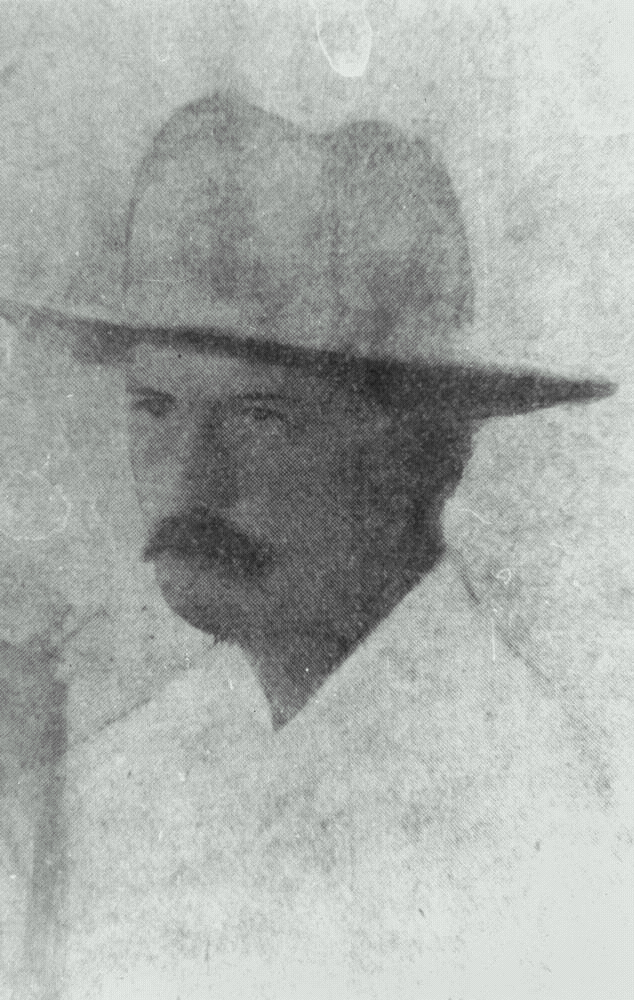 |
| Portrait of Christie Palmerston, North Queensland explorer |
On the 9th September 1990 the rail line to Herberton closed. In
in 2003, the Atherton-Herberton Historic Railway Inc. formed after the disbanding of a former volunteer group. Today this group are working on establishing a tourist railway experience between Atherton & Herberton.
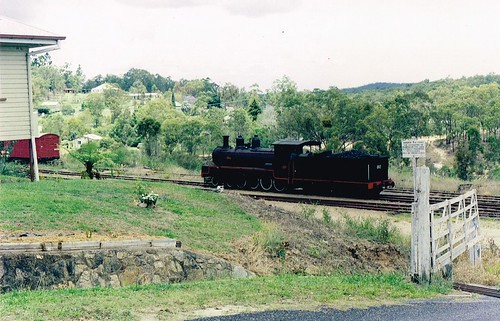 |
| The Herberton railway station, QLD, in about about 1995. It opened in 1910. Now a railway museum. Karen Johns |
 |
| The Herberton railway station, in about about 1995. It opened in 1910. Now a railway museum. Karen Johns |
Herberton is located on the Great Dividing Range, south-west of the town of Atherton. The town is surrounded by tropical rainforest and sclerophyll forests and woodlands. It is also a quaint and friendly town with four museums.
Around Herberton
 |
| Bank of Australasia, Herberton Heritage Village. The bank first opened in 1835 and later became known as the ANZ bank after merging with the Union Bank of Australia. |
 |
| Exhibit at Herberton Heritage Village |
 |
| Exhibit at Herberton Heritage Village |
 |
| Funeral carriage exhibit at Herberton Heritage Village |
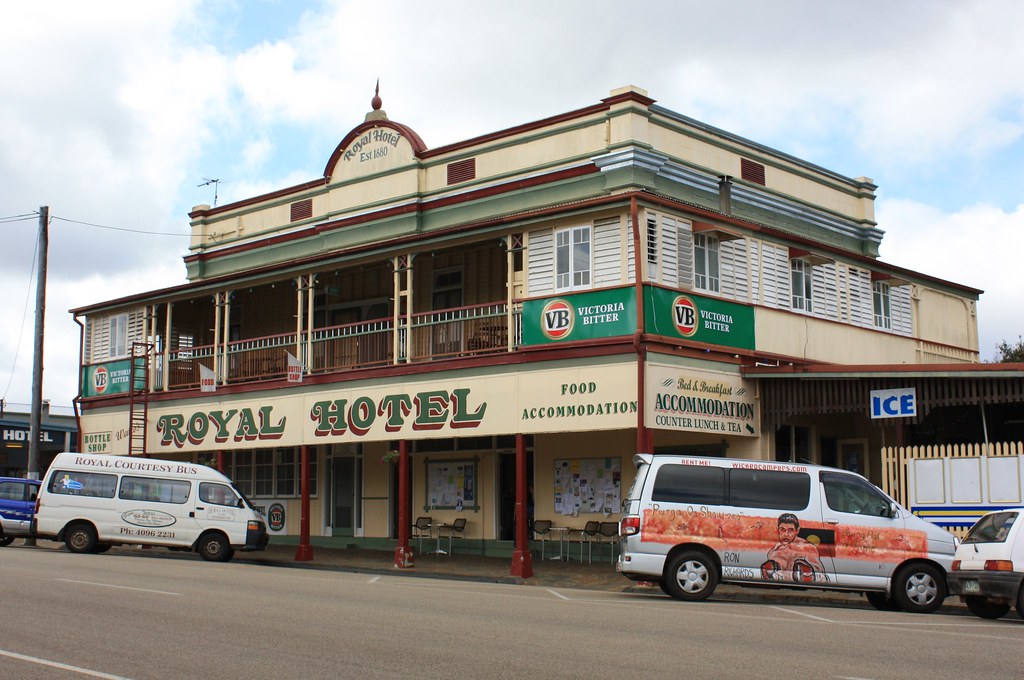 |
| Royal Hotel, Herberton, circa 1880. Jan Smith |
 |
| The Convent of Our Lady of Mercy in Herberton, circa 1910 |
 |
| Grace St, Herberton QLD |
_(1992).jpg) |
| Former Jack & Newell General Store, Herberton,, circa 1882 |
.jpg) |
| The Herberton School of Arts was constructed in 1881 |
.jpg) |
| Holy Trinity church, Herberton, was built in 1889 |
 |
| Herberton Spy & Camera Museum, by Alex Monckton |
 |
| Shops in Heberton |
 |
| Mount Saint Bernard College in Herberton, opened St Patrick’s Convent and Primary School in Herberton in 1910 |
 |
| Another view of the Main Street of Herberton, QLD |
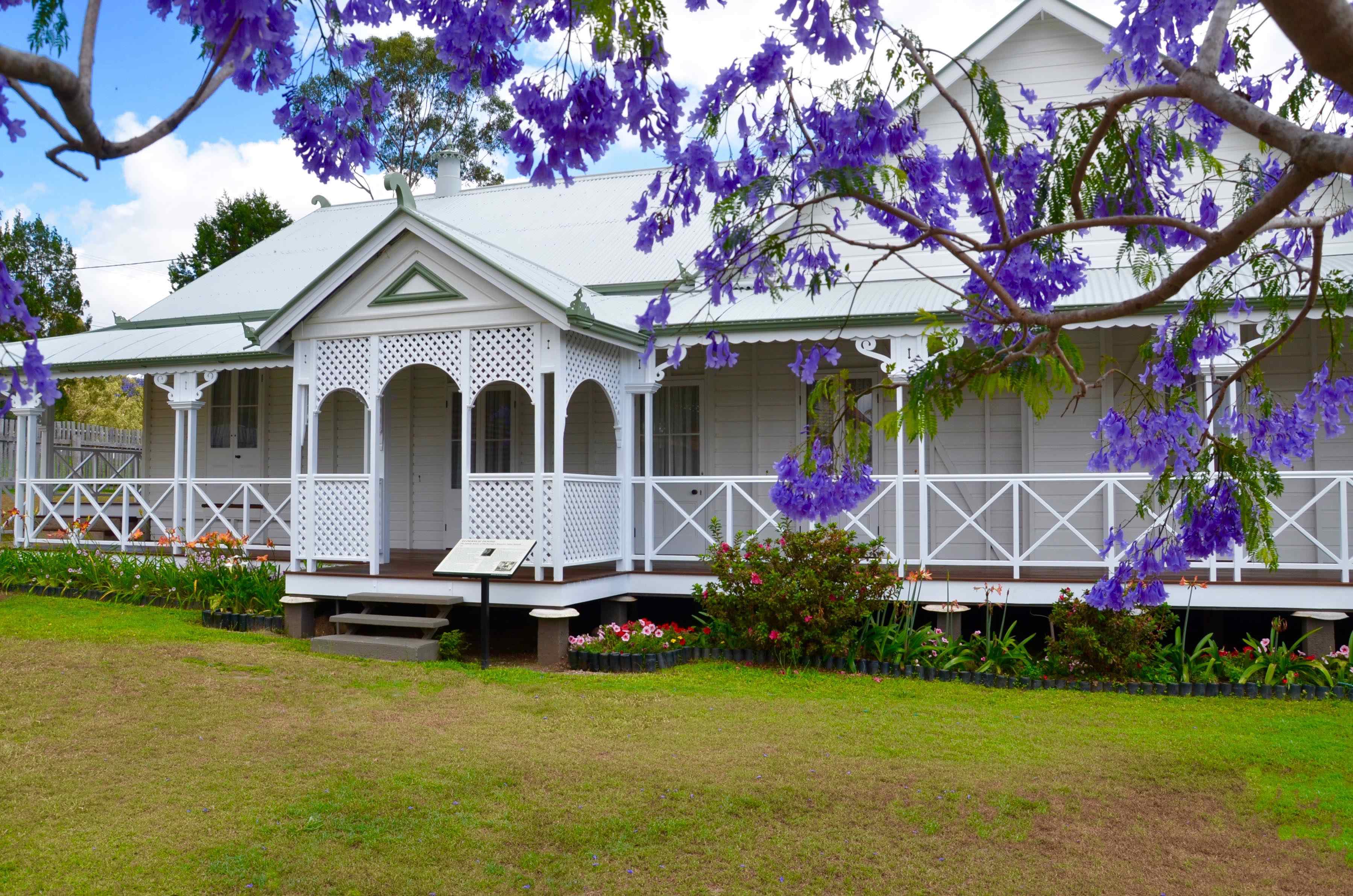 |
| Elderslie House, the former home of far north Queensland adventurer, miner and entrepreneur John Newell, at Historic Village Herberton, QLD |
 |
| Herberton Post Office (now Herberton Heritage Cottage) built, 1913 |
 |
| The Herberton War Memorial was unveiled on 3 May 1922 |
Things To Do and Places To Go
Herberton Heritage Walk
















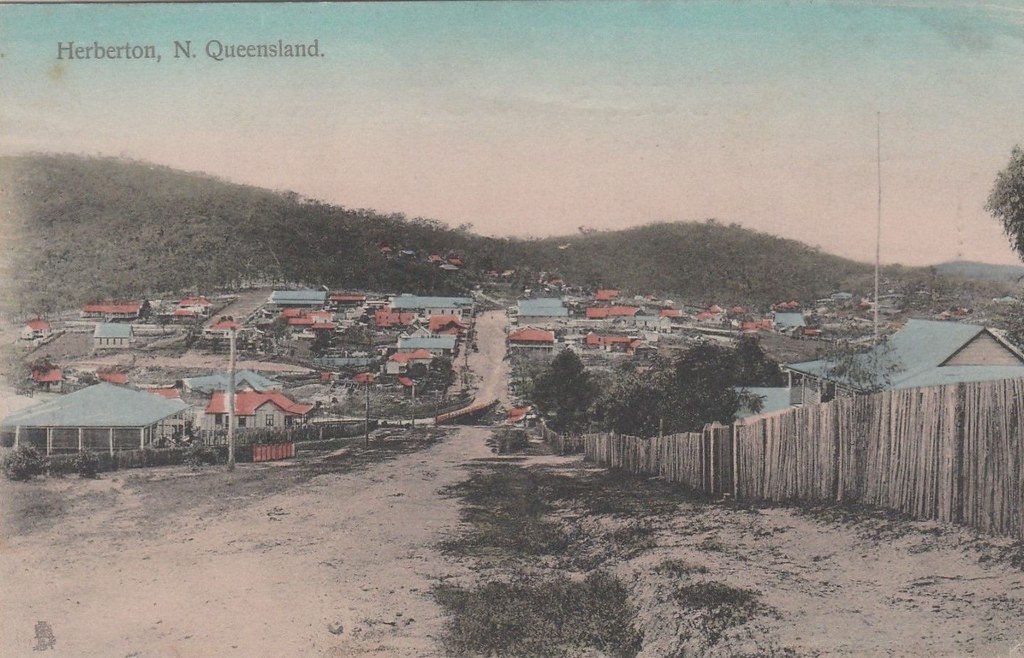












































_(1992).jpg)
.jpg)
.jpg)















